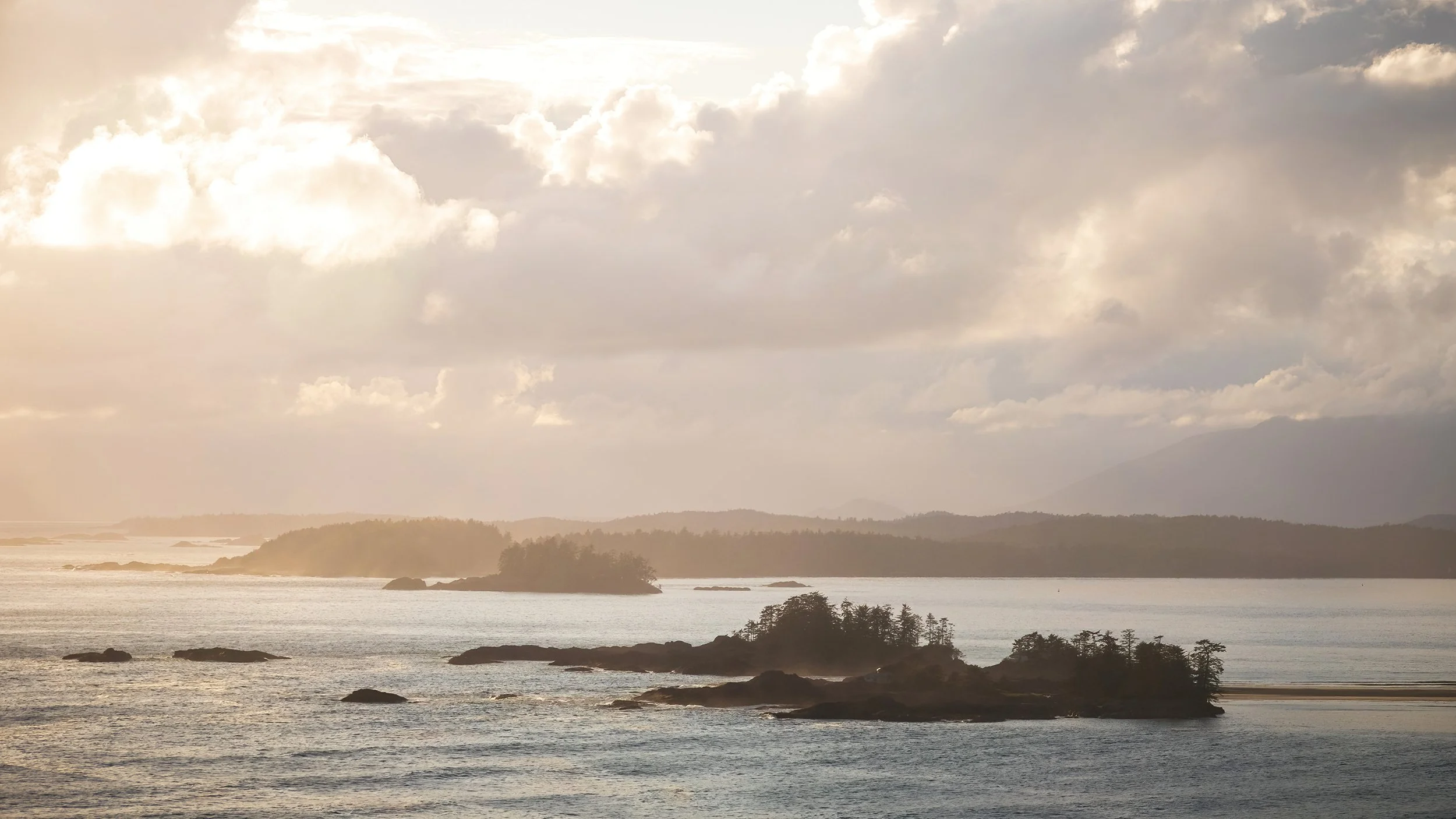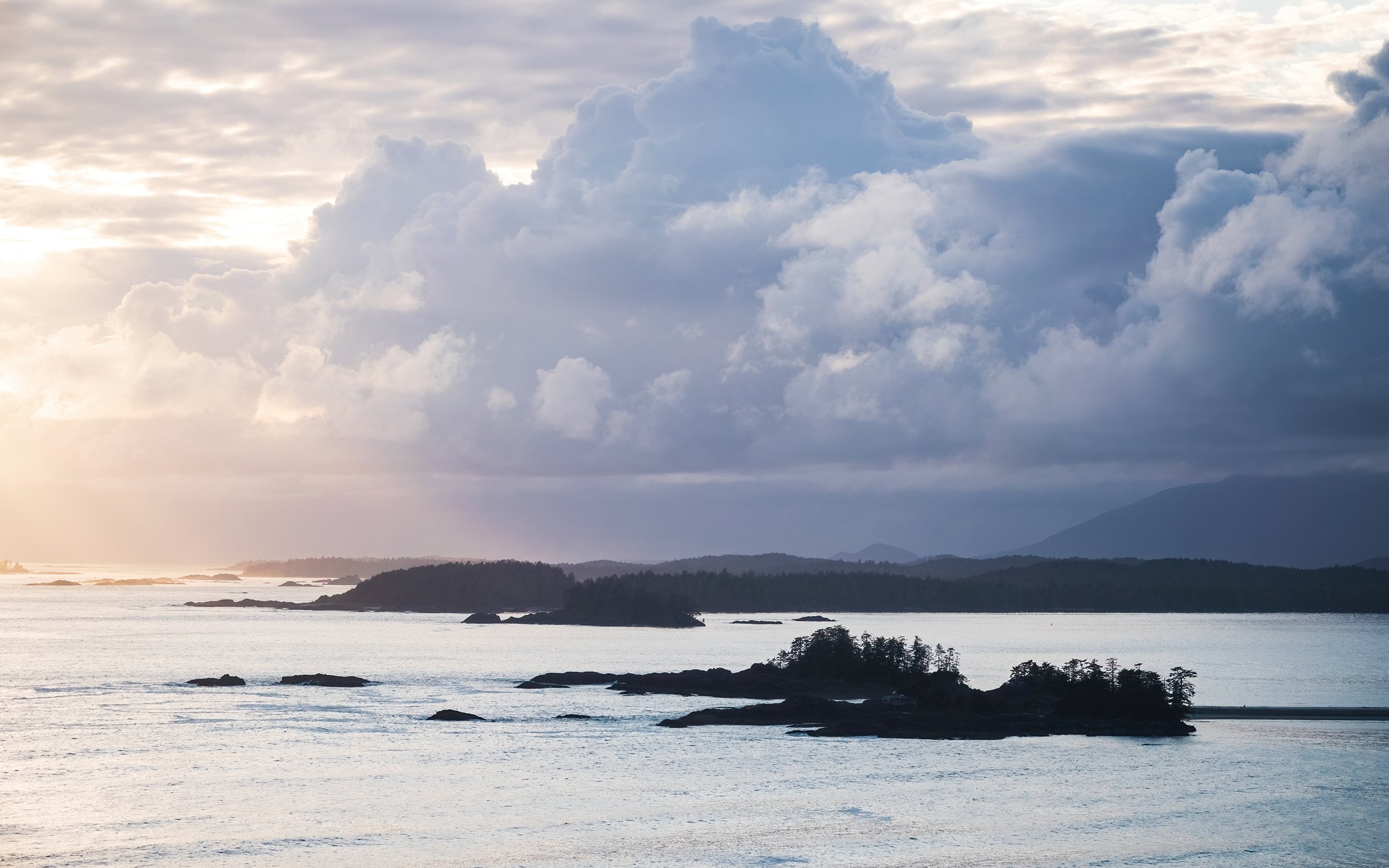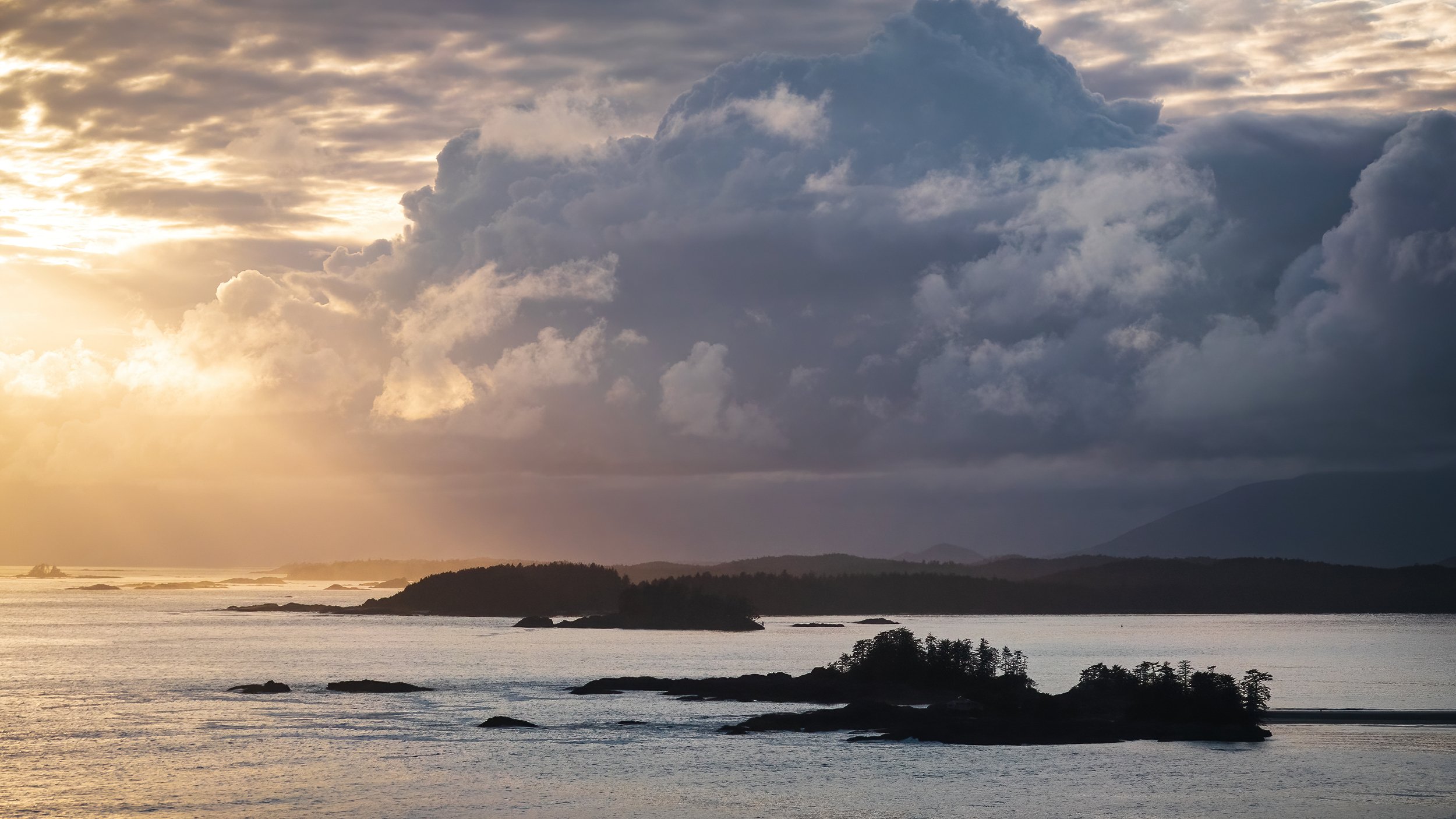“And yet, Canadian forests always felt haunted to me, especially by my ancestors, the ones who’d defended the land or conquered it, who came to cut, burn, and farm the trees. It seems the forest always remembers. Even when we’d like it to forget our transgressions.”
— Prof. Suzanne Simard
Finding the Mother Tree
The final week of May 2024. My second trip in as many seasons to the Cascadian bioregion, after February’s road trip down the coast of Oregon. Thanks to my personality, planning style, and philosophy of travel, many of the adventures I write about here are “a long time coming.” But, this tour of Vancouver Island’s southern, central, and west coast regions takes the entire cake, and the candles too. Some of my favorite landscape photographers, the inspirations who pushed me down this path over a decade ago, hail from beautiful British Columbia, and I have long wanted to see their scenes and follow in their creative footsteps. This trip was dreamt of in 2018, delayed by the COVID pandemic, sketched out in 2021, fully booked for May 2022 (flights, hotels, car and ferries, and COVID testing appointments all) before being abruptly cancelled by my leg injury one week before our departure. Now, two years later, I finally pull the trigger and make the trip out alone, “on assignment” to document some of the Island’s beautiful old-growth forests and coastal scenes - before they are changed forever by time, tourism, and the forestry industry that is so central to the provincial economy. Part of me is pained to experience this place for the first time without Jane or Jordan (at least, the first time since a brief port-of-call stop in Victoria during college), but another part of me is glad for the solitude - the freedom to range, get deeply lost in my thoughts, and keep only the mist and rain for company. Solitude is a rarity these days, and I have learned to cherish it and experience it more intentionally than I did in my younger years. Furthermore, this trip was on the bucket list, and the bucket list, I’ve decided, stops for nothing and no one. Although I’d originally sketched out a weeklong trip to include some time on the Lower Mainland, work and home commitments abbreviate things a bit. Instead, I spend four days focusing my attention on the Island. Bookended by air travel days, I drive from Victoria down to Port Renfrew on Sunday, complete the Pacific Marine Drive and head west to Pacific Rim National Park on Monday, spend Tuesday exploring the west coast, and return through Alberni Valley to the south-central Island on Wednesday before flying home on Thursday. It’s a whirlwind - an unforgettable one.
It starts with an exhausting travel day which sees me leaving home around noon on Saturday of Memorial Day weekend, eating a shawarma airport dinner in Toronto, and then boarding a delayed flight to Victoria (oh Air Canada…). We land a couple of airplane movies and indigenous short films later, and I’m surprised to find the rental car counter still open. I head out to find my car, a notably low-slung and sleek Dodge Charger GT, before making the 5-minute drive to nearby Sidney, where I check-in at the Best Western Emerald Isle just past midnight (3 AM Boston time… thank goodness I had the foresight to book a place so close to the airport). A shower, a quick email home to let Jane know I’m safely in Canada, and I pass out.
The next morning, I eat breakfast in the hotel and walk across the street to Thrifty Foods for some basic groceries (bread, fruit, juice, canned veggies) before heading out on the highway. My destination for the day is Port Renfrew, where I plan to spend the night after exploring the beaches and forests along the southern coast and the Juan de Fuca Strait. In the morning, I pass through Sooke and follow the coastline westward, watching the mountains of the Olympic Peninsula rising in the distance across the strait. Along the way, I make stops at China Beach and Sombrio Beach. It’s an impressively rainy and moody day - not great for wide landscapes, but not bad for forest photography, which benefits from atmospheric mist and low-contrast light to provide calm and order in otherwise chaotic scenes. Having gotten a lot of practice in Oregon (and nearly caused the death of my camera screen from being drenched in the redwoods), I stick to a rain discipline regimen that includes mounting an umbrella to my backpack’s shoulder strap so that I can shoot with both hands, keeping my camera tucked safely in my rain gear at all times when walking, and extensively previsualizing scenes and dialing in settings before taking the camera body out of my jacket.
On short walks down to the beach at both China and Sombrio, I take my time despite the pouring rain, admiring the tall trees, the coastal scenery, and the flora of the understory (including the ubiquotous salal and a variety of blooming wildflowers). At Sombrio Beach, I take a longer walk down the beach to visit a waterfall that flows into a creek, which drains into the ocean. Reaching the waterfall requires a bit of bushwhacking and scrambling along the creek-bank, and not a small amount of walking upstream in the water. My old, leaky boots get soaked; my feet and socks are destined to be damp for the rest of the day (and indeed, the majority of the trip). But that’s how it goes on the rainy coast of British Columbia.
A little further along the coast, I reach Port Renfrew, a small community on the shores of the inlet of Port San Juan. It’s a quiet little place that barely rises to being called a town — a collection of houses, a gas station, a few hostels, lodges, and diners, where services are lacking and cell reception is spotty at best. In other words, it’s idyllic and it’s utterly perfect. Before I can rest though, I have a long journey to make into the mountains north of town, in the Gordon River Valley. In a way, the entire trip has been built around my desire to see this place - the stands of ancient, old-growth forest that remain on Edinburgh Mountain and its environs, and specifically the parcel of wild climactic forest called Eden Grove, which is being actively threatened by logging interests. I have heard Eden Grove described by photographers and forestry ecologists alike as one of the finest old-growth forests in the world, let alone Canada, and I wanted to finally see it with my own eyes. It is, in a word, the fulcrum of the trip.
After a brief stop at the beach near Pacheedaht First Nation (“People of the Sea Foam”) land, where Scotch broom carpets the dunes in golden flowers, I begin the bumpy gravel drive up into the mountains. It’s only seven or so miles from the asphalt to my destination at the foot of Edinburgh Mountain, but the logging road is atrocious at times, especially in this rainstorm, which has transformed the gravel surface into a series of rutted-out puddles. Not wanting to risk my low-clearance car and not knowing how deep each of these puddles is, I take things nice and slow up the mountain, zigging and zagging and dodging as I go. After turning off from Gordon River Road to the Edinburgh Main, I leave my car just before the bridge across the Gordon River. It’s raging and torrential in the downpour, and water is cascading down the sides of the mountain in braids and rivulets. At the entrance to the bridge, as if to mark the liminal space between the rest of our world and someplace truly special, are three words spray-painted in bright orange by a prior activist: “Defend the Sacred”. In the distance, garguantuan trees tower above the mist upon the mountainside.
Donning my gear, I leave the car and walk through the pouring rain up the mountainside. I am completely alone, and as far as I can tell, I might as well be the only human being between here and seven miles away in the relative civilization of Port Renfrew. Personal safety is paramount. I told Jane in advance that I would completely out-of-reach for at least a few hours, but if anything were to happen, help would be a long time coming. Just past the bridge and around another bend, the road transforms from pitted gravel to a series of blast craters steeply climbing upward - impassable to all but the toughest 4x4 vehicles - but it is not so bad on foot. In a way, I am glad to be taking the last steps in my pilgrimage to this place on foot, in abysmal weather conditions. Just as during my redwoods exploration in February, I find myself thinking that any other weather would have felt totally inappropriate to the ecosystem. The rolling clouds and endless mists also provide a perfect backdrop for photos, accentuating the trees and making their massive size stand out clearly against the distant hillsides and the funeral-shroud-of-a-sky. After a brief uphill walk (less than a mile from road bridge), I reach an open cutblock that has been planted over with young firs, and come face-to-face with the sole survivor of the clearcut: Big Lonely Doug, Canada’s second tallest Douglas Fir. I take a series of verts, panoramas, and telephoto shots here, playing with ways to frame Doug along with the distant trees. To the east (my left), I see my first glimpse of Eden Grove, a disarmingly tall and wild jumble of trees, standing like a monstruous wall over the young fir trees in the clearing. A little further up the road, and past an enormous roadside waterfall, I reach the trail that leads into the grove.
How can I describe Eden Grove in words? If standing among California and Oregon’s coastal redwoods in February was like swimming in a pod of whales, then walking through Eden Grove would be like scuba-diving in a perfect coral reef. I visit other old-growth forests over the subsequent few days, but none of them comes close to the scale and beauty of this little slice of surviving forest. A short boardwalk trail leads through the grove, old and worn enough to blend into the surroundings. Each way I look, I see massive trees - Douglas firs and western redcedars twenty feet or more in diameter and soaring hundreds of feet beyond view above me. The rainstorm is continuing to rage, but the dense canopy shields me from the sky, turning the rain into a fine mist that lands on the understory. The boardwalk ends in a massive redcedar, over thirty feet across and draped in ferns and lichen. A veritable great-grandmother of the forest, whose root system and mycorrhizal networks have likely given rise to more life than we can fathom. I take lots of compositions, mostly handheld, of my surroundings. Scale is totally lost in these photos; the best I can do is to try to capture the mood - the emotional experience of being in this beautiful grove. I feel so utterly surrounded by life and beauty that I I find myself talking - really, for the first time all day since the grocery store in the morning. Talking to myself, talking to the trees. Wanting to thank them for being here, for shielding my steps, for letting me visit their home of over a thousand years, for giving a tiny struggling human being just an hour of perfect peace. It occurs to me that they will outlast us - trees like this. Maybe not Eden Grove, and maybe not many other groves of old-growth forest. But trees like this will outlast us. They will be here - or make their return - when we are gone. They will be fine. It will all be alright. Back above the grove, I walk a mile back down the logging road to my car at the bridge. Along the road, on gravel piles, on concrete barriers, and along the bridge railing, are spray-painted dueling visions of the earth:
“Water is Life”
“Doug Needs Friends ❤️”
“Fuck the Company”
”Defend Our Home”
“Fuck the Blockade”
Long live the blockade.
After a steady and peaceful if incredibly bumpy drive back into Port Renfrew, I check into my accommodations for the evening - a hiker’s bungalow located just off the road. After unpacking and unfurling my wet clothes, socks, and boots in the bathroom to dry (a blower fan is provided, thank goodness), I make dinner (ramen of course…) and eat and rest while my camera batteries and mental batteries recharge. I check in with Jane, who has just put Jordan to sleep on the other side of the continent. After a brief liedown on the bunk-bed, I head back out for a late sunset loop hike at nearby Botanical Beach. The skies are still morose and cloudy, so golden light is out of the question, but I nevertheless have an enjoyable time on the beach, shooting the tidepools, the distant Olympic Peninsula, and the windblown pines and rocky islets in Botany Bay. On my way back into town, I exercise a bit of spontaneity and stop at the nearby marina, walking out onto the water to photograph the inlet at blue hour, along with the lights of the town diner in the distance against a backing of misty trees and foggy mountains. It is a mesmerizing scene, and a perfect way to cap this day of exploring the heart of the raincoast - a day that I am in no hurry to forget anytime soon. I’m back at the bungalow just after 9 PM, and off to sleep before long.




















































































































































































































